Defining the exact number of calories there are in your garden salad can be a hard task. It is important you find out so you can lose or gain weight or not over eat. Find out how to track your calories and find a range of recipes ready to suite your needs.
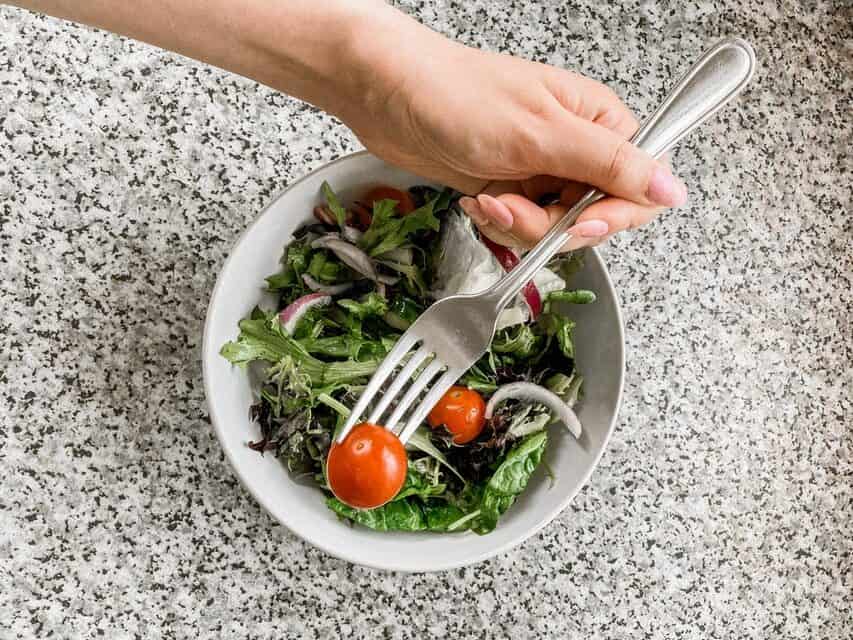
How to track the calories in a garden salad
First of all, for the most accurate way to find out how many calories are in your garden salad, you should download the myfitnesspal app which you can download on IOS or android.

Use the app to add every item of food you add on to your plate and you will get a detailed breakdown on how to find out the number of calories there are in terms of fats, carbohydrates and proteins as well as micro nutrients.
This is perfect for dieting as you can weigh everything in your garden salad accurately and even scan the bar code of produce you may buy from the store for detailed calorie information.
Garden salad calorie examples
If you are wondering how many calories are in your garden salad or how many calories are in a salad you plan on making, here are some options and guidelines on the type of garden salads there are.
Various garden salads have been grouped them in to categories based on how many categories I would expect for them to contain.
The ingredients used for these variations were the most typical vegetables people garden:
- Lettuce
- Tomatoes
- Carrots
- Cucumber
- Onions
- cheese
- croutons
100 calorie garden salad
- 2 cups of iceburg lettuce: 14 calories
- 1 cup of grape tomatoes: 30 calories
- 1 large shredded carrot: 30 calories
- Half a small cucumber: 10 calories
- A quarter of an onion: 10 calories
TOTAL: 94 calories
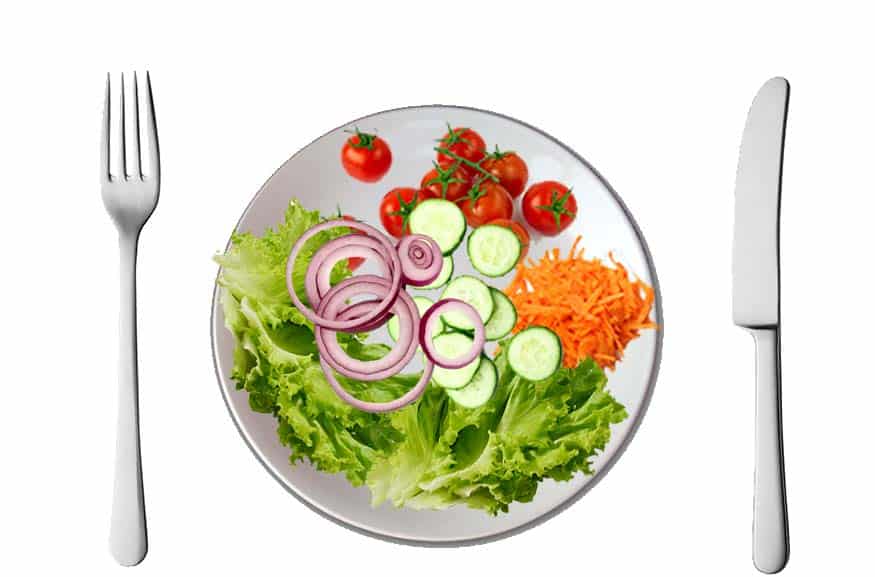
This salad is all simply raw ingredients with no dressings. It would be a good idea to eat something like this alongside another type of food as the calories in here are so small you will likely still feel hungry if you eat this as a meal.
However, despite the low calories there are still a range of flavours in the salad as there are five different vegetables. Try this one out if you small meal or snack.
200 calorie garden salad
- 2 cups of iceburg lettuce: 14 calories
- 1 cup of grape tomatoes: 30 calories
- 2 large shredded carrots: 60 calories
- 1 small cucumber: 20 calories
- Half an onion: 20 calories
- 1 tsbp of vinaigrette salad dressing: 55 calories
TOTAL: 199 calories
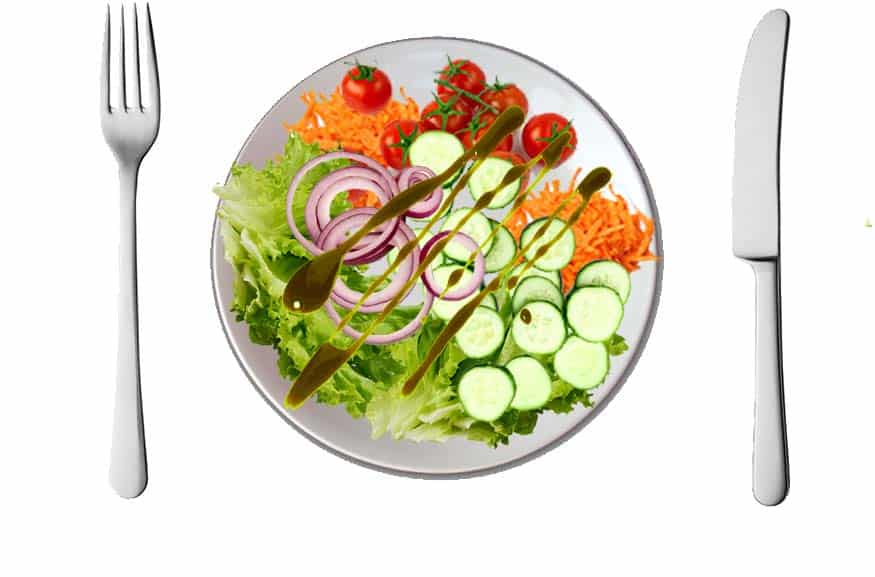
In this salad there is another portion of cucumber and carrots as opposed to the previous salad.
Also, enjoy some added flavour with a dash of vinaigrette drizzled on top. This would be a more common garden salad because it contains a sizeable amount of vegetables and salad dressing.
Adding in similar sized portions of different types of vegetables instead of cucumber and carrots will also yield a salad with roughly the same number of calories.
300 calorie garden salad
- 2 cups of iceburg lettuce: 14 calories
- 1 cup of grape tomatoes: 30 calories
- 2 large shredded carrots: 60 calories
- 1 small cucumber: 20 calories
- Half an onion: 20 calories
- 2 tsbp of vinaigrette salad dressing: 110 calories
- Half a tsbp of olive oil: 60 calories
TOTAL: 314 calories
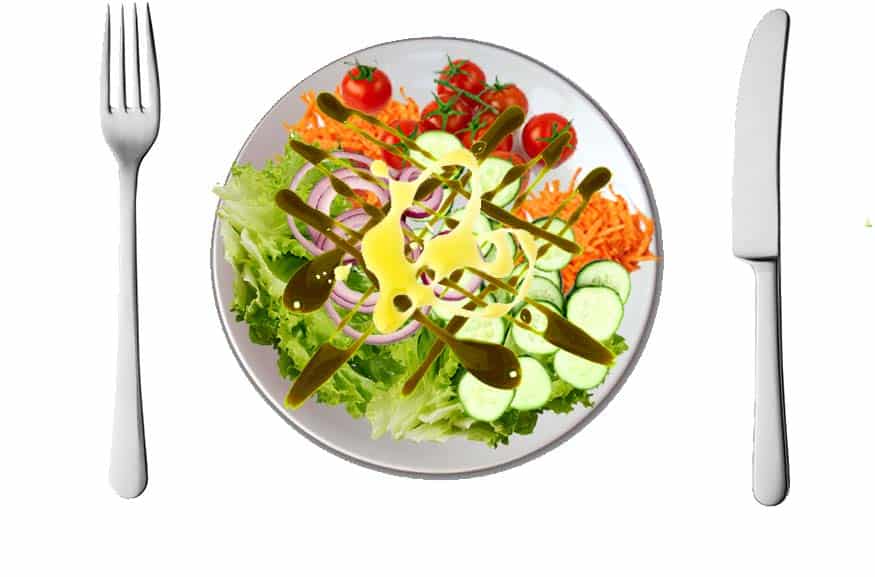
Olive oil and another drizzle of vinaigrette was added to this salad. Olive oil is extremely calorie dense so be careful when measuring out half a tablespoon of it as going over by a small amount could result in your garden salad being significantly more calories than expected.
The good thing about this garden salad is it will certainly taste nice as there is even more flavour from the added salad dressings as well as there being a sizeable amount of vegetables.
400 calorie garden salad
- 2 cups of iceburg lettuce: 14 calories
- 1 cup of grape tomatoes: 30 calories
- 2 large shredded carrots: 60 calories
- 1 small cucumber: 20 calories
- Half an onion: 20 calories
- 2 tsbp of vinaigrette salad dressing: 110 calories
- Half a tsbp of olive oil: 60 calories
- 1 oz of feta cheese: 70 calories
TOTAL: 384 calories
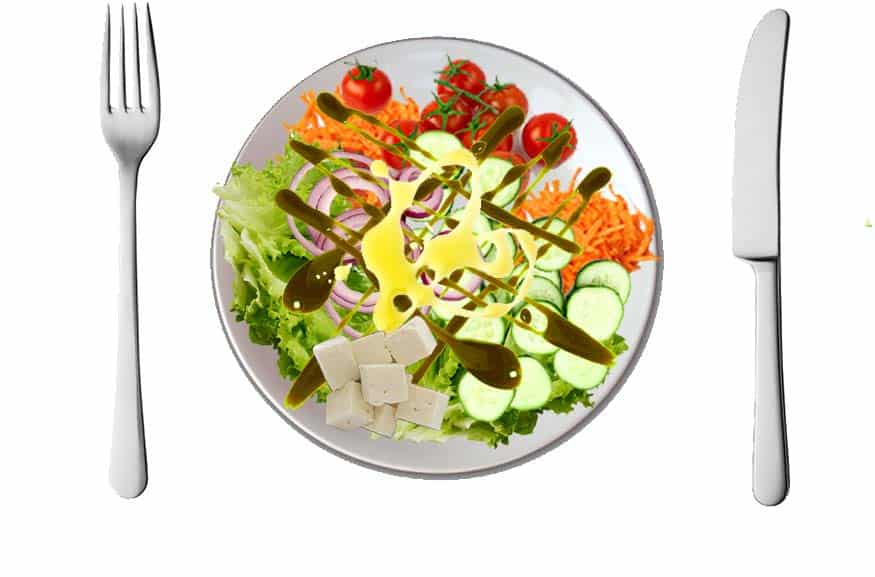
To add to the calories in this salad, one oz which is roughly half a cup of feta cheese has been added. This is a great way to add flavour and a range of textures to the salad.
Cheese is very calorie dense so be careful when measuring it out. Experimenting with the type of cheese added are also great options.
At this stage your garden salad will have a range of flavours and is starting build up a lot of textures too. For just 400 calories, a garden salad like this will fill most people up as a meal.
500 calorie garden salad
- 2 cups of iceburg lettuce: 14 calories
- 1 cup of grape tomatoes: 30 calories
- 2 large shredded carrots: 60 calories
- 1 small cucumber: 20 calories
- Half an onion: 20 calories
- 2 tsbp of vinaigrette salad dressing: 110 calories
- Half a tsbp of olive oil: 60 calories
- 1 oz of feta cheese: 70 calories
- Half a cup of croutons: 120 calories
TOTAL: 504 calories
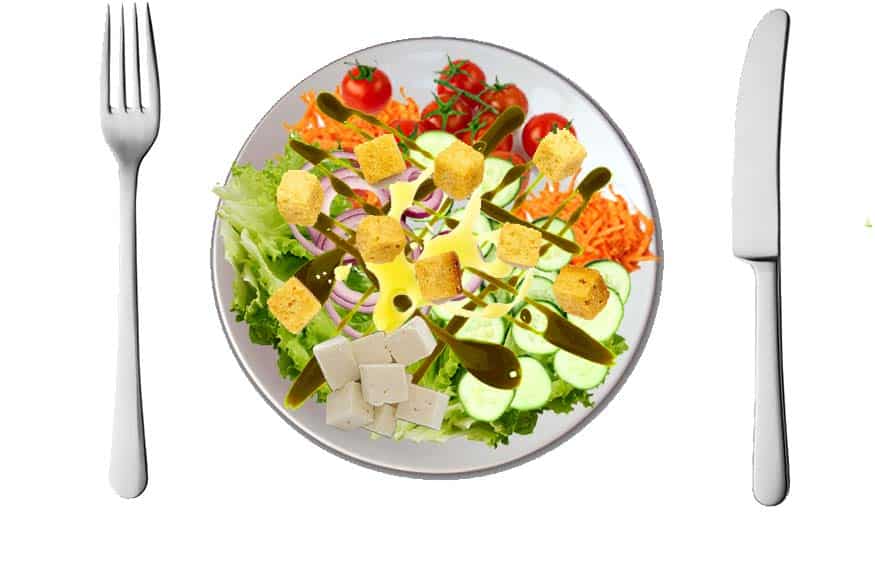
Coming in at the most calorific salad on this article is a crouton salad. Just half a cup of croutons will as an extra 120 calories to your garden salad but they are a great way to add a range of texture.
Mixing this up with the feta cheese, salad dressings and vegetables will create a well balanced salad.
At this stage your salad will definitely resemble more of a meal than a snack and would be perfect to use as a replacement for a meal if you are dieting or trying to lose weight.
Conclusion
There is no set amount of calories in a garden salad. It will depend on how much and what you put in it exactly. However, if you try to follow the guides laid out in this article you can easily estimate how many calories are roughly in your garden salad.
Perhaps you could follow one of the recipes or even use an app such as My Fitness Pal to accurately measure out your own garden salad for eating.
You could also potentially read up on microgreens and add them to your salad as well. They work well in salads ad add an interesting addition to your salad you can grow yourself.
